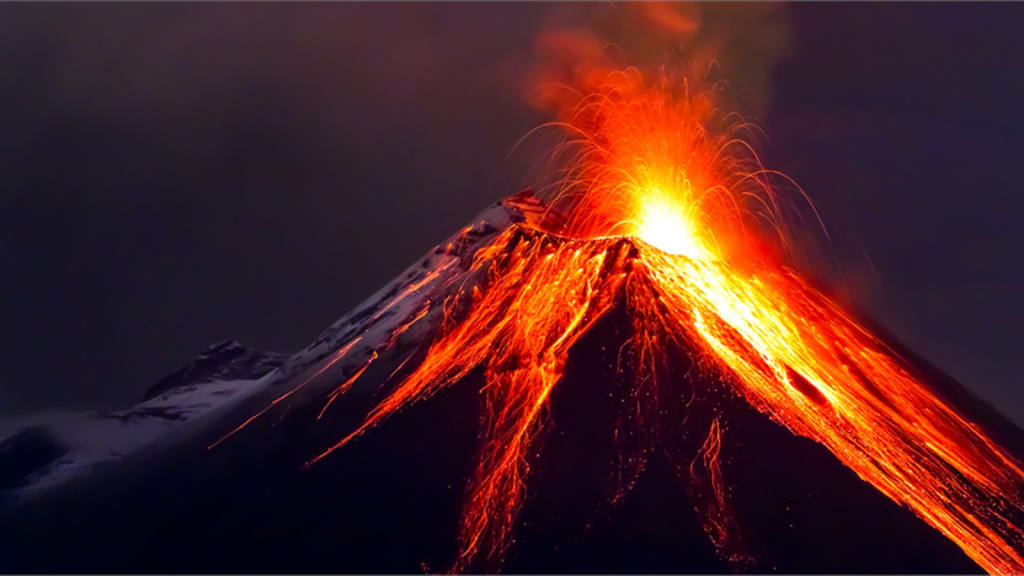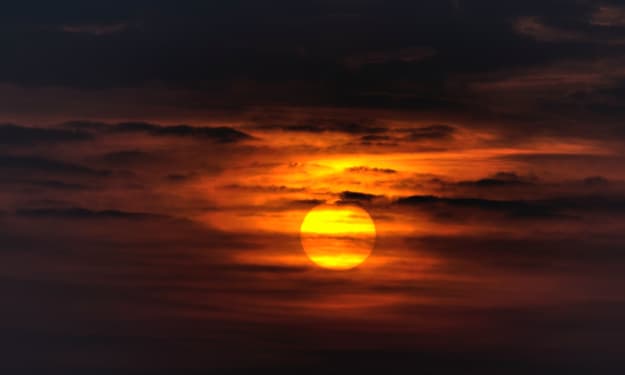
In February of 1942, a Mexican farmer named Dionisio Pulido thought he heard thunder coming from his cornfield. However, the sound wasn’t coming from the sky, the source was a large, smoking crack that was emitting gas and ejecting rocks. This fissure would eventually become known as the Paricutin volcano, and over the next nine years, its lava and ash would cover over 200 square kilometers.
But where did this new volcano come from, and what triggered its unpredictable eruption? The story of any volcano begins with magma. Often, this molten rock forms in areas where ocean water is able to slip into the Earth’s mantle and lower the layer’s melting point. The resulting magma typically remains under the Earth’s surface thanks to the delicate balance of three geological factors.
The first factor is lithostatic pressure. This is the weight of the Earth’s crust pushing down on the magma below. Magma pushes back with the second factor, magmastatic pressure. The battle between these forces strains the third factor: the rock strength of the Earth’s crust. Usually, the rock is strong enough and heavy enough to keep the magma in place. But when this equilibrium is disturbed, the consequences can be explosive.
One of the most common causes of an eruption is an increase in magmastatic pressure. Magma contains various elements and compounds, many of which are dissolved in the molten rock. At high enough concentrations, compounds like water or sulfur no longer dissolve, and instead form high-pressure gas bubbles. When these bubbles reach the surface, they can burst with the force of a gunshot. And when millions of bubbles explode simultaneously, the energy can send plumes of ash into the stratosphere. But before they pop, they act like bubbles of CO2 in a shaken soda. Their presence lowers the magma’s density, and increases the buoyant force pushing upward through the crust.
Many geologists believe this process was behind the Paricutin eruption in Mexico. There are two known natural causes for these buoyant bubbles. Sometimes, new magma from deeper underground brings additional gassy compounds into the mix. But bubbles can also form when magma begins to cool. In its molten state, magma is a mixture of dissolved gases and melted minerals. As the molten rock hardens, some of those minerals solidify into crystals. This process doesn’t incorporate many of the dissolved gases, resulting in a higher concentration of the compounds that form explosive bubbles.
Not all eruptions are due to rising magmastatic pressure. Sometimes, the weight of the rock above can become dangerously low. Landslides can remove massive quantities of rock from atop a magma chamber, dropping the lithostatic pressure and instantly triggering an eruption. This process is known as “unloading” and it’s been responsible for numerous eruptions, including the sudden explosion of Mount St. Helens in 1980. But unloading can also happen over longer periods of time due to erosion or melting glaciers. In fact, many geologists are concerned that glacial melt caused by climate change could increase volcanic activity.
Finally, eruptions can occur when the rock layer is no longer strong enough to hold back the magma below. Acidic gases and heat escaping from magma can corrode rock through a process called hydrothermal alteration, gradually turning hard stone into soft clay. The rock layer could also be weakened by tectonic activity. Earthquakes can create fissures allowing magma to escape to the surface, and the Earth’s crust can be stretched thin as continental plates shift away from each other.
Unfortunately, knowing what causes eruptions doesn’t make them easy to predict. While scientists can roughly determine the strength and weight of the Earth’s crust, the depth and heat of magma chambers makes measuring changes in magmastatic pressure very difficult. But volcanologists are constantly exploring new technology to conquer this rocky terrain. Advances in thermal imaging have allowed scientists to detect subterranean hotspots. Spectrometers can analyze gases escaping magma, and lasers can precisely track the impact of rising magma on a volcano’s shape. Hopefully, these tools will help us better understand these volatile vents and their explosive eruptions.
About the Creator
Boboie Limen
Discovering and sharing knowledge is my passion as a Filipino citizen. Let me guide you through the vast resources available to us under the sun.






Comments (1)
You skillfully explain the complex interplay of magmatic pressure, lithostatic pressure, and rock strength, shedding light on the science behind volcanic eruptions. Keep it up